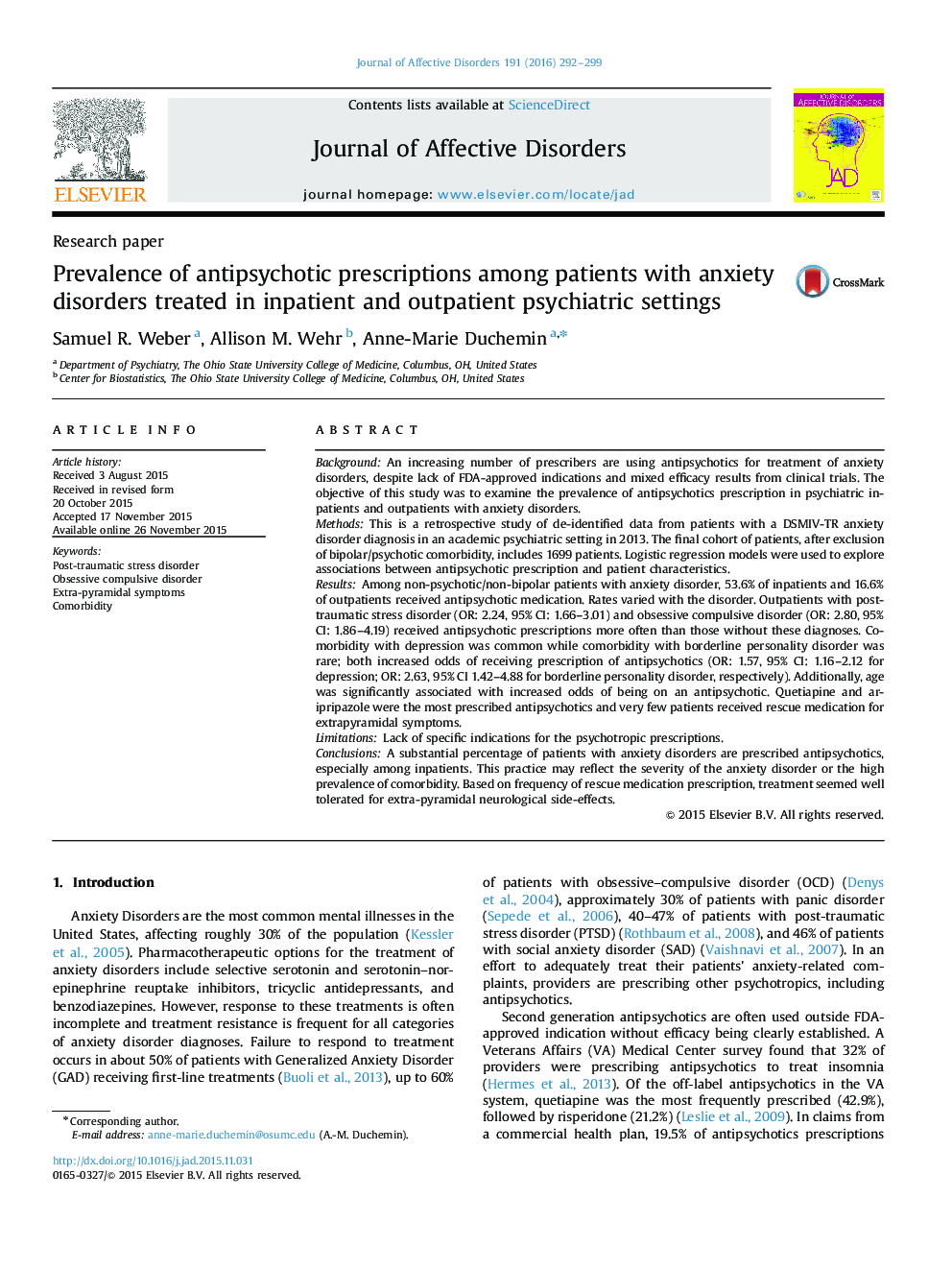| کد مقاله | کد نشریه | سال انتشار | مقاله انگلیسی | نسخه تمام متن |
|---|---|---|---|---|
| 6230578 | 1608134 | 2016 | 8 صفحه PDF | دانلود رایگان |
- Inpatients and outpatients with anxiety disorders were prescribed antipsychotic medications.
- Prescription varied with the setting: 53.6% of inpatients, 16.6% of outpatients.
- Rate of prescription varied with type of anxiety disorder.
- Quetiapine and aripripazole were the most prescribed antipsychotics.
- Psychiatric comorbidity may explain some of the antipsychotic prescriptions.
- Based on rescue medications, treatment seemed well tolerated for EPSside effects.
BackgroundAn increasing number of prescribers are using antipsychotics for treatment of anxiety disorders, despite lack of FDA-approved indications and mixed efficacy results from clinical trials. The objective of this study was to examine the prevalence of antipsychotics prescription in psychiatric inpatients and outpatients with anxiety disorders.MethodsThis is a retrospective study of de-identified data from patients with a DSMIV-TR anxiety disorder diagnosis in an academic psychiatric setting in 2013. The final cohort of patients, after exclusion of bipolar/psychotic comorbidity, includes 1699 patients. Logistic regression models were used to explore associations between antipsychotic prescription and patient characteristics.ResultsAmong non-psychotic/non-bipolar patients with anxiety disorder, 53.6% of inpatients and 16.6% of outpatients received antipsychotic medication. Rates varied with the disorder. Outpatients with post-traumatic stress disorder (OR: 2.24, 95% CI: 1.66-3.01) and obsessive compulsive disorder (OR: 2.80, 95% CI: 1.86-4.19) received antipsychotic prescriptions more often than those without these diagnoses. Comorbidity with depression was common while comorbidity with borderline personality disorder was rare; both increased odds of receiving prescription of antipsychotics (OR: 1.57, 95% CI: 1.16-2.12 for depression; OR: 2.63, 95% CI 1.42-4.88 for borderline personality disorder, respectively). Additionally, age was significantly associated with increased odds of being on an antipsychotic. Quetiapine and aripripazole were the most prescribed antipsychotics and very few patients received rescue medication for extrapyramidal symptoms.LimitationsLack of specific indications for the psychotropic prescriptions.ConclusionsA substantial percentage of patients with anxiety disorders are prescribed antipsychotics, especially among inpatients. This practice may reflect the severity of the anxiety disorder or the high prevalence of comorbidity. Based on frequency of rescue medication prescription, treatment seemed well tolerated for extra-pyramidal neurological side-effects.
Journal: Journal of Affective Disorders - Volume 191, February 2016, Pages 292-299
